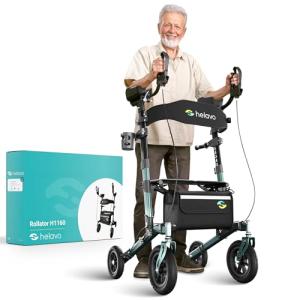The Most Pervasive Problems With Transport Walker
Understanding Transport Walkers: A Comprehensive Guide
Transport walkers are essential mobility aids designed to boost the self-reliance and security of individuals, particularly the elderly and those with mobility challenges. Integrating the performance of a walker with the convenience of a seat, these gadgets enable users to keep their mobility while supplying a resting option whenever needed. In this blog site post, we explore the features, advantages, types, and upkeep of transport walkers, in addition to frequently asked concerns to equip readers with vital knowledge.
What is a Transport Walker?
Transport walkers are mobility devices geared up with wheels created for people with mobility challenges. Unlike conventional walkers, which need users to raise them a little to move, transport walkers include wheels that assist in rolling. They normally include a seat, handlebars for stability, and a storage basket for individual items.
Key Features of Transport Walkers
- Wheeled Base: The rolling wheels enable for easy motion, decreasing the stress on the user.
- Foldable Design: Most transport walkers can be quickly folded for storage or transport.
- Comfortable Seating: A padded seat is typically incorporated, providing users a location to rest.
- Hand Brakes: Designed for safety, most walkers include hand brakes that allow users to control their speed and maintain stability.
- Storage Options: An integrated basket or pouch at the front enables users to carry personal items without the requirement for extra bags.
Benefits of Using Transport Walkers
Transport walkers use various advantages that accommodate the needs of various users:
1. Increased Mobility
Transport walkers permit individuals to navigate their spaces more easily. They are particularly advantageous for those recovering from surgery or dealing with chronic health issues.
2. Safety and Stability
With a sturdy frame and helpful handlebars, transport walkers supply stability, reducing the risk of falls and accidents.
3. Resting Capability
The seating option provides users a possibility to rest throughout extended getaways, which is important for those who may tire easily.
4. Easy Maneuverability
Transport walkers are lightweight and created for smooth movement, making them easy to utilize both inside your home and outdoors.
5. Independence
By utilizing transport walkers, individuals can engage in activities without relying greatly on caregivers, therefore enhancing their self-reliance and quality of life.
Types of Transport Walkers
When considering a transport walker, it's essential to recognize the various types offered:
Type
Description
Standard Transport Walker
Standard model with four wheels and a seat.
Transport Wheelchair
Combines the functions of a walker and a wheelchair. Can be pressed by a caretaker.
Heavy-Duty Transport Walker
Developed for bigger users, supplying additional stability and weight capability.
Two-Wheel Walker
Features two wheels at the front and 2 back legs, enabling for much better balance.
Reclining Walker
Provides adjustable seating for comfort, targeting users with unique needs.
How to Choose the Right Transport Walker
Factors to Consider:
- User's Height: Ensure that the walker is adjustable to the user's height for ideal convenience and safety.
- Weight Capacity: Check the walker's weight limit to ensure it can accommodate the user.
- Meant Use: Determine if the walker will be utilized mostly inside your home, outdoors, or both.
- Storage Features: Evaluate the convenience of storage options offered with the walker.
- Mobility: If regular transport of the walker is needed, consider its weight and how quickly it can be folded.
Maintenance Tips for Transport Walkers
To prolong the life and effectiveness of a transport walker, follow these upkeep tips:
- Regular Cleaning: Wipe down the frame and seat with a moist fabric to remove dirt and stains.
- Examine the Wheels: Ensure the wheels are rolling efficiently; lube if necessary.
- Check Brakes: Regularly check that hand brakes work correctly for included safety.
- Tighten Bolts and Screws: Periodically examine and tighten any loose elements.
- Replace Parts As Needed: If wheels or footrests show indications of wear, consider replacing them for optimum security.
Often Asked Questions (FAQs)
1. Who can gain from a transport walker?
Transport walkers are ideal for older grownups, individuals recovering from surgeries, and those with conditions such as arthritis, stroke, or balance concerns.
2. Are transport walkers appropriate for outdoor usage?
Yes, lots of transport walkers are developed with durable products and wheels that can handle outdoor terrain, although it's best to check manufacturer specs.
3. How much weight can a transport walker generally deal with?
A lot of transport walkers have weight capabilities varying from 250 to 400 pounds, depending upon the brand and design.
4. Do I require a prescription to purchase a transport walker?
While a prescription is not typically needed to acquire a transport walker, seeking advice from a healthcare supplier can assist in picking the ideal walker for specific needs.
5. this post be utilized by individuals with restricted upper body strength?
Yes, many models are created with features that offer stability and make them easier to use for people with minimal upper body strength.
Transport walkers are indispensable help that promote independence, security, and mobility for people with mobility challenges. By understanding their features, advantages, and maintenance, users can choose the ideal walker to match their way of life. Purchasing a transport walker can make a significant difference in boosting one's lifestyle, making everyday activities more manageable. Whether used for brief errands or longer expeditions, a transport walker provides the support and confidence needed to browse the world.
